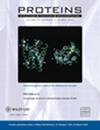CASP16蛋白靶点亮点:来自结构提供者的见解。
IF 2.8
4区 生物学
Q2 BIOCHEMISTRY & MOLECULAR BIOLOGY
引用次数: 0
摘要
本文深入分析了选定的CASP16靶点,重点介绍了它们的生物学和功能意义。作者强调了目标蛋白最相关的特征,并讨论了这些特征在提交的预测中重现的程度。虽然结构预测方法的总体表现仍然令人印象深刻,但挑战仍然存在,特别是在建模罕见的结构基序、柔性区域、小分子相互作用、翻译后修饰和生物学上重要的界面方面。解决这些限制可以加强结构预测在补充实验工作和推进基础研究和生物医学应用方面的作用。本文章由计算机程序翻译,如有差异,请以英文原文为准。
Protein Target Highlights in CASP16: Insights From the Structure Providers.
This article presents an in-depth analysis of selected CASP16 targets, with a focus on their biological and functional significance. The authors highlight the most relevant features of the target proteins and discuss how well these were reproduced in the submitted predictions. While the overall performance of structure prediction methods remains impressive, challenges persist, particularly in modeling rare structural motifs, flexible regions, small molecule interactions, posttranslational modifications, and biologically important interfaces. Addressing these limitations can strengthen the role of structure prediction in complementing experimental efforts and advancing both basic research and biomedical applications.
求助全文
通过发布文献求助,成功后即可免费获取论文全文。
去求助
来源期刊

Proteins-Structure Function and Bioinformatics
生物-生化与分子生物学
CiteScore
5.90
自引率
3.40%
发文量
172
审稿时长
3 months
期刊介绍:
PROTEINS : Structure, Function, and Bioinformatics publishes original reports of significant experimental and analytic research in all areas of protein research: structure, function, computation, genetics, and design. The journal encourages reports that present new experimental or computational approaches for interpreting and understanding data from biophysical chemistry, structural studies of proteins and macromolecular assemblies, alterations of protein structure and function engineered through techniques of molecular biology and genetics, functional analyses under physiologic conditions, as well as the interactions of proteins with receptors, nucleic acids, or other specific ligands or substrates. Research in protein and peptide biochemistry directed toward synthesizing or characterizing molecules that simulate aspects of the activity of proteins, or that act as inhibitors of protein function, is also within the scope of PROTEINS. In addition to full-length reports, short communications (usually not more than 4 printed pages) and prediction reports are welcome. Reviews are typically by invitation; authors are encouraged to submit proposed topics for consideration.
 求助内容:
求助内容: 应助结果提醒方式:
应助结果提醒方式:


